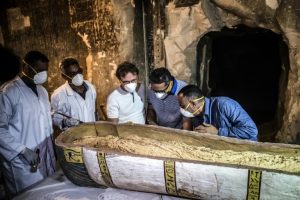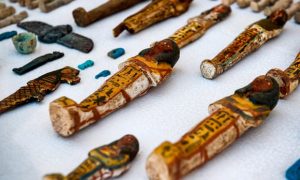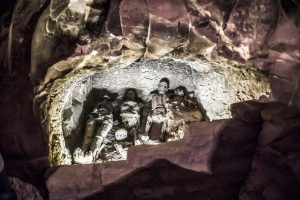Introduction
Recently, during the 3rd week of the month of November 2018, Egypt’ Ministry of Antiquities announced another great & interesting discovery. It is about the newly discovered tomb at Luxor. The modern city of Luxor, located in southern Egypt, yielded a number of great archaeological evidence related to the understanding of the ancient history of Egypt.
Area of discovery & team
The exact area where the sarcophagus has been found earlier was the northern area of El-Asasef. It is a necropolis site, located between the royal tombs at the Valley of the Kings & the Valley of the Queens on the western bank of the Nile.
This burial site belongs to the senior officials & noble personalities who were close to the pharaohs. This discovery was conducted by a French archaeological mission.
What was discovered?
Total two coffins were discovered earlier by the French-led mission. The two tombs were present with their mummies inside. Two sarcophaguses date back to the 17th & 18th dynasty respectively. The first one has been opened earlier & also examined by a team of experts.
Discovery of a mummy
The second one was an unopened sarcophagus. Recently, an archaeological research team uncovered a well-preserved mummy of a woman inside the sarcophagus. It dates back to at least 3000 years back.


What is interesting about the discovery?
First of all, this is for the first time that authorities had opened a previously unopened sarcophagus in front of international media. Another notable point is that the 17th & 18th dynasty refers to the time period of 13th century BCE which recorded reigns of some most interesting as well as important pharaohs of that time such as Tutankhamun & Rameses II.
What type of grave goods were recovered?
Different types of grave goods were recovered from the tomb. 5 colored masks. around 1000 Ushabti statues, made of wood. faience & clay: the miniature figures of servants were found. This miniature servant figures might have been placed with the intention of serving the deceased one in the afterlife.




Evidence of earlier use & re-use
Other mummies, skeletons & skulls were recovered from the tombs which date back to almost 4000 years back. It refers to the time period of the Middle Kingdom. It indicates that the tomb was earlier used by this tome & later it was re-used.

The tomb has also colored ceiling paintings which probably depict the owner & his family. Further research by experts will definitely uncover more information about the mummy as well as the tomb also.
